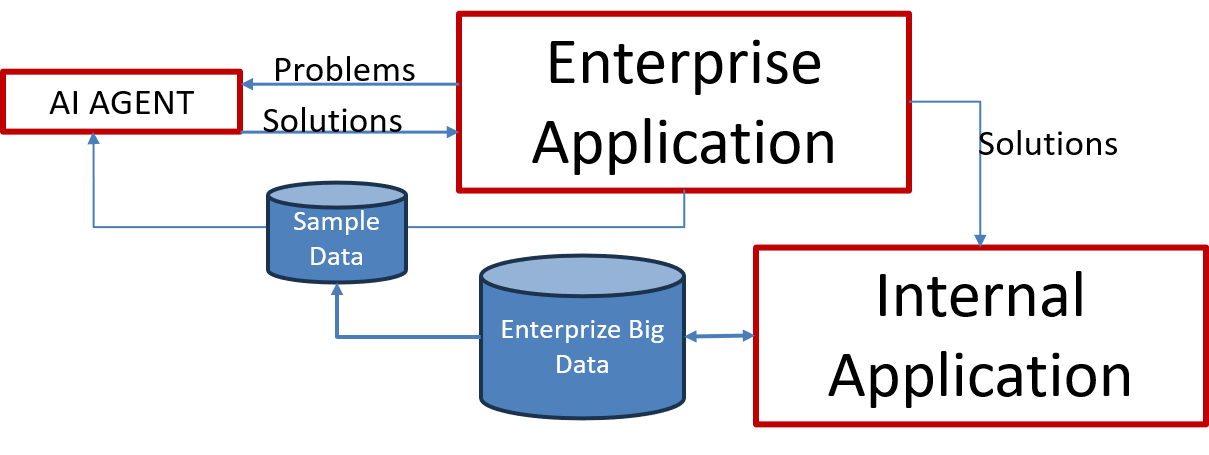Build Voice Assistants Easily With OpenAI's New Tools

Table of Contents
Understanding OpenAI's Role in Simplifying Voice Assistant Development
OpenAI's powerful APIs are revolutionizing voice assistant development. Key to this simplification are the Whisper API for speech-to-text conversion and the various GPT models for natural language understanding and generation. These pre-trained models handle the heavy lifting of speech recognition and NLP, eliminating the need for developers to build these complex components from scratch. This significantly reduces development time, cost, and complexity.
-
Reduced development time and cost: Leveraging pre-trained models drastically cuts down the development cycle, allowing developers to focus on the unique aspects of their application rather than wrestling with low-level implementation details.
-
Access to advanced speech recognition and natural language processing capabilities: OpenAI's models offer state-of-the-art accuracy and efficiency in speech-to-text transcription and natural language understanding, far surpassing what could be achieved with traditional, custom-built solutions.
-
Improved accuracy and efficiency compared to building from scratch: The pre-trained models have already been trained on massive datasets, resulting in superior performance and reliability. This means better user experiences and fewer errors.
-
Focus on application logic rather than low-level implementation: Developers can concentrate on designing the user interface, integrating with other services, and defining the core functionality of their voice assistant, leading to faster iteration and innovation.
Step-by-Step Guide: Building a Basic Voice Assistant with OpenAI
Building a basic voice assistant with OpenAI's tools involves a straightforward process. While a complete code tutorial is beyond the scope of this article, this conceptual walkthrough provides a high-level understanding of the key steps. Python is a popular choice for this type of development, and numerous libraries simplify API integration.
-
Setting up the development environment: This involves installing the necessary libraries (like the OpenAI Python library) and setting up API keys.
-
Integrating OpenAI's Whisper API for speech-to-text conversion: The Whisper API transcribes audio input into text, forming the basis for understanding the user's request.
-
Using a GPT model to process user requests and generate responses: A GPT model like GPT-3.5-turbo or GPT-4 analyzes the transcribed text, understands the user's intent, and generates an appropriate response.
-
Integrating a text-to-speech API (e.g., OpenAI's future TTS offering or a third-party solution) for output: This converts the generated text response back into speech, allowing the voice assistant to communicate with the user.
-
Handling user inputs and generating dynamic responses: This involves building logic to manage different user requests, handle potential errors, and provide contextualized responses.
Advanced Features and Customization Options
Once you have a basic voice assistant working, you can enhance it with advanced features to create a truly personalized and sophisticated experience.
-
Personalizing the user experience based on preferences: By storing and using user data (with appropriate privacy considerations), the voice assistant can tailor responses and behavior to individual needs.
-
Implementing context-aware responses: The assistant can remember previous interactions, allowing it to understand the conversation's flow and provide more relevant and intelligent responses.
-
Integrating with smart home devices or other applications: Connect your voice assistant to other services such as calendars, email, music players, and smart home systems to expand its functionality.
-
Creating custom wake words or voice profiles: Allow users to customize the wake word or even their own unique voice profiles for enhanced personalization.
-
Adding error handling and robust input validation: Implement comprehensive error handling to gracefully manage unexpected inputs or API failures, ensuring a robust and reliable experience.
Addressing Challenges and Best Practices
While OpenAI's tools significantly simplify development, certain challenges need careful consideration.
-
Implementing robust error handling mechanisms: Handle unexpected inputs, API errors, and network issues gracefully to prevent application crashes and maintain a positive user experience.
-
Protecting user data and ensuring compliance with privacy regulations: Implement strong security measures and adhere to relevant data privacy regulations (like GDPR and CCPA) to protect user information.
-
Designing for scalability and handling high volumes of requests: Consider scalability from the outset to ensure your voice assistant can handle a growing number of users and requests without performance degradation.
-
Testing the voice assistant thoroughly before deployment: Rigorous testing is crucial to identify and fix bugs, ensuring a smooth and reliable user experience.
Conclusion
OpenAI's new tools are revolutionizing the development of voice assistants, making this powerful technology more accessible than ever before. By leveraging pre-trained models for speech recognition and natural language processing, developers can significantly reduce development time and costs, focusing on the unique aspects of their applications. The ease of use, combined with access to cutting-edge AI models, unlocks the potential for rapid innovation in the field of conversational AI. Start building your own voice assistant with OpenAI's powerful and easy-to-use tools! Explore OpenAI's documentation and unlock the potential of conversational AI today! Simplify your voice assistant development journey with OpenAI.

Featured Posts
-
 Country Legend Willie Nelson Releases Oh What A Beautiful World
Apr 29, 2025
Country Legend Willie Nelson Releases Oh What A Beautiful World
Apr 29, 2025 -
 Analyzing The Treasury Market Key Events Of April 8th
Apr 29, 2025
Analyzing The Treasury Market Key Events Of April 8th
Apr 29, 2025 -
 President Trumps Potential Pardon Of Pete Rose A Deep Dive
Apr 29, 2025
President Trumps Potential Pardon Of Pete Rose A Deep Dive
Apr 29, 2025 -
 Skoleprestasjoner Og Adhd Medisin En Analyse Av Fhis Data
Apr 29, 2025
Skoleprestasjoner Og Adhd Medisin En Analyse Av Fhis Data
Apr 29, 2025 -
 Lynas Rare Earths Seeks Us Aid For Texas Refinery Amid Rising Costs
Apr 29, 2025
Lynas Rare Earths Seeks Us Aid For Texas Refinery Amid Rising Costs
Apr 29, 2025
 50 Godini Praznuva Lyubimetst Na Milioni
50 Godini Praznuva Lyubimetst Na Milioni
